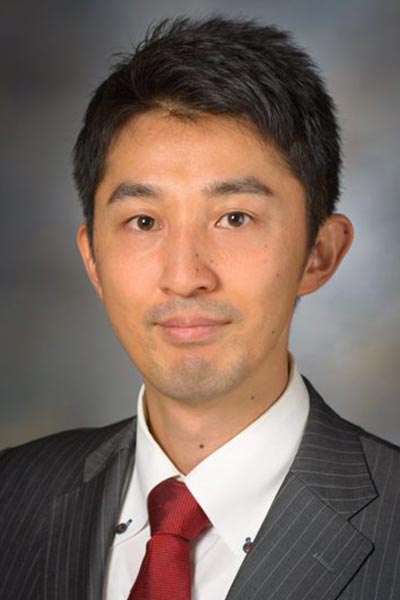Experts discuss how clonal hematopoiesis impacts cancer treatment decisions
In the past decade, the recognition of age-associated mutations in hematopoietic stem progenitor cells—now recognized as clonal hematopoiesis (CH)—has provided new insight into a common pre-leukemic clonal precursor state with wide-ranging implications in health and disease. Growing evidence suggests a critical role for CH in driving complications associated with oncological care through systemic inflammation.
Three investigators provided a state-of-the-art update on CH during one of the first-ever AACR Annual Meeting sessions dedicated to the topic. The session, which was originally presented Wednesday, April 13, and can be viewed on the virtual platform by registered meeting participants through July 13, 2022, is titled How Should Clonal Hematopoiesis Impact Cancer Treatment Decisions?
CH is a clonally extended population of hematopoietic stem cells with driver mutations and/or copy number mutations. Most of these mutations are associated with age, but they can also result from selective bottlenecks such as chemotherapy, infection, or organ transplantation. Mutations that provide an evolutionary advantage allowing specific clones to outcompete wild-type populations lead to CH.

“Clonal expansion is not confined to hematopoiesis—it’s just that blood is so easy to sample,” said Koichi Takahashi, MD, PhD, from MD Anderson Cancer Center. “If you look, you can find somatic mutations and clonal expansion in skin, gastrointestinal, lung, endometrial, and other tissues.”
Not only can CH lead to the development of multiple types of myeloid malignancies, but recent data links CH to cardiovascular and many other diseases. CH is associated with graft-versus-host disease in allogeneic stem-cell transplantation, increased risk of cytokine release syndrome and immune effector cell-associated neurotoxicity syndrome in chimeric antigen receptor T-cell therapy, increased severity of infectious diseases, chronic obstructive pulmonary disease, osteoporosis, gout, and type 2 diabetes. All are affected by the systemic inflammation produced by CH.
In cancer, CH is associated with worse overall survival, but the impact of CH depends on context. In the FIRE-3 trial, patients with metastatic colon cancer treated with a FOLFIRI chemotherapy regimen plus cetuximab or bevacizumab who had CH had better overall survival.
It’s difficult to directly target the clonal burden of CH because most CH mutations are currently undruggable, Takahashi said. And CH mutations typically arise from early hematopoietic stem cells, which are often dormant.
It may be possible to target CH indirectly with agents that mitigate inflammation caused by factors such as IL-1b, the NLRP4 inflammasome, IL-6, and others. Trial data suggest that canakinumab may reduce atherosclerotic cardiovascular disease in the presence of CH stemming from TET2 mutations.

“Beyond aging, we see an enrichment of CH mutations in patients treated for many cancer types,” said Kelly Bolton, MD, PhD, from Washington University. “CH is associated with specific therapies, especially radiotherapy. There are also strong associations with cytotoxic therapies, particularly topoisomerase II inhibitors and platinum. Among platinum-based chemotherapies, the association with carboplatin is significantly stronger compared to cisplatin and oxaliplatin.”
Serial biopsies and blood samples show that cytotoxic therapies and radiation promote the growth of existing CH mutations, Bolton explained. Mutations to PTM1P, TP53, and CHEK2 are particularly active in promoting CH.
CH, including CH with high-risk mutational features, can be detected in the blood many years before acute myeloid leukemia (AML). That suggests an early window for intercepting AML and other myeloid malignancies by directly targeting high-risk mutations.
Breast cancer is a useful model to study the risk for myeloid malignancies because it is the most common solid tumor, Bolton said.
“The vast majority of women treated for breast cancer are at a very low risk—less than 0.05%— for AML or MDS (myelodysplastic syndrome),” she said. “But if you look at the tail end of the distribution, we approach higher absolute risk. Modifying therapy for these women might make a difference.”
Clonal cytopenias of uncertain significance (CCUS) is another potential target. Most patients with CCUS, about 95%, progress to hematologic malignancy at 10 years. A small trial with enasidenib showed positive results in the early phases.
“This is an exciting approach that will be used in a small minority of patients,” Bolton said. “Understanding CH will help us understand which mutations and who to target.”
TET2 is another key mutation target in CH. Somatic deletion of TET2 leads to increased self-renewal and a clone that can slowly, steadily outcompete other hematopoietic stem cells. TET2 mutations in CH, along with other common mutations, are an attractive target to treat and potentially prevent AML and other leukemias.

“The vast majority of patients with AML will relapse with a median survival of 5.4 months,” said Ross L. Levine, MD, of Memorial Sloan Kettering Cancer and the Weill Cornell School of Medicine. “We are not curing them. We need to bring the treatment to the clone early, before it leaps the barrier to disease.”
The good news is that TET2 is among a very small group of somatic mutations that are relevant to AML, he said. Unlike more common health problems such as cardiovascular disease or hyperlipidemia that are affected by hundreds, or perhaps thousands of genes, it’s practical to study all of the genes and alleles that affect AML, Levine explained.
“The biology is tractable,” Levine said. “As a community, we can characterize all of the relevant genes in the next three to five years. This is an achievable goal.”
There are at least 20 million individuals with CH stemming from somatic mutations, Levine said, and fewer than 30,000 with myeloid malignancies. Progression from CH to cardiovascular disease or myeloid malignancy can take decades, but there are already mouse models that recapitulate CH.
Single-cell profiling will reveal clone-specific genotypes and phenotypes that can help characterize the leukemic ecosystems of different mutant clones to develop more specific and accurate models for biologic and therapeutic studies.
“The goal is to identify specific genetic and pharmacologic dependencies in specific clones and identify therapeutic targets [that] abrogate myeloid transformations or target specific mutations and clones in leukemia patients,” Levine said.
More from the AACR Annual Meeting 2025
View a photo gallery of scenes from Chicago, continue the conversation on social media using the hashtag #AACR25, and read more coverage in AACR Annual Meeting News.

